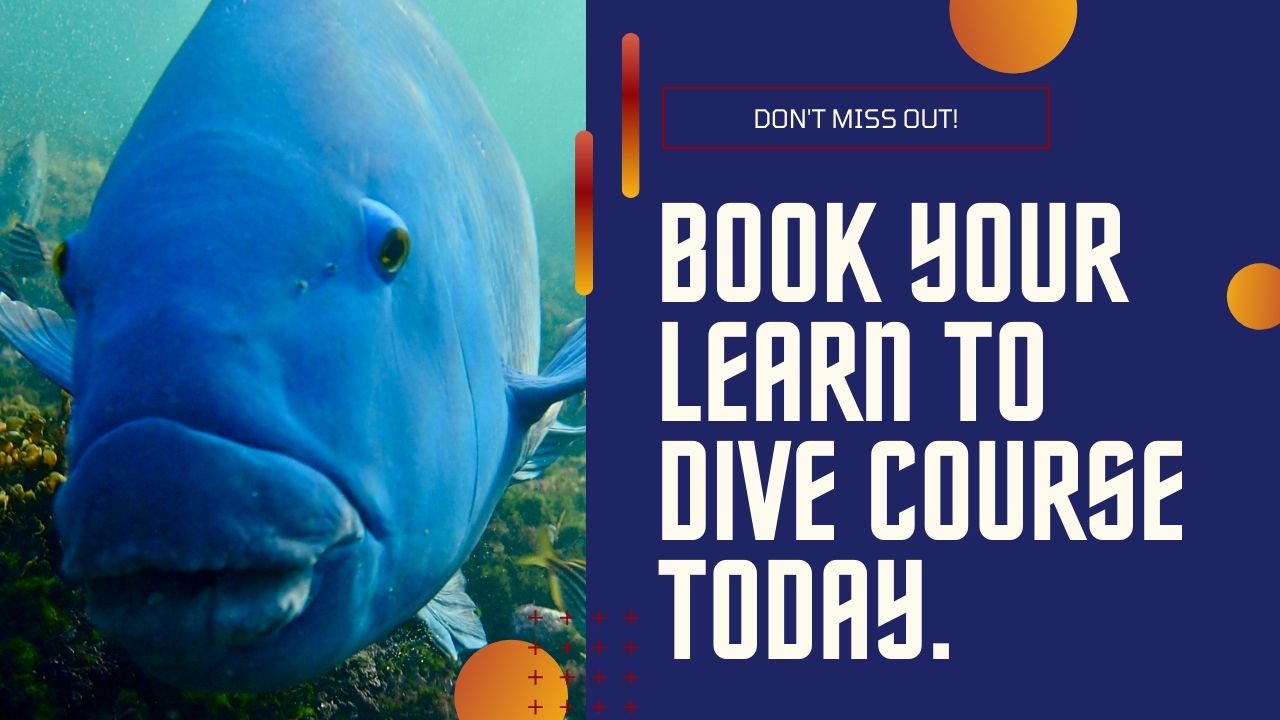You have 0 product(s) in your cart.
Abyss Scuba Diving
Explore Diving With Giant Cuttlefish: South Australia & Worldwide
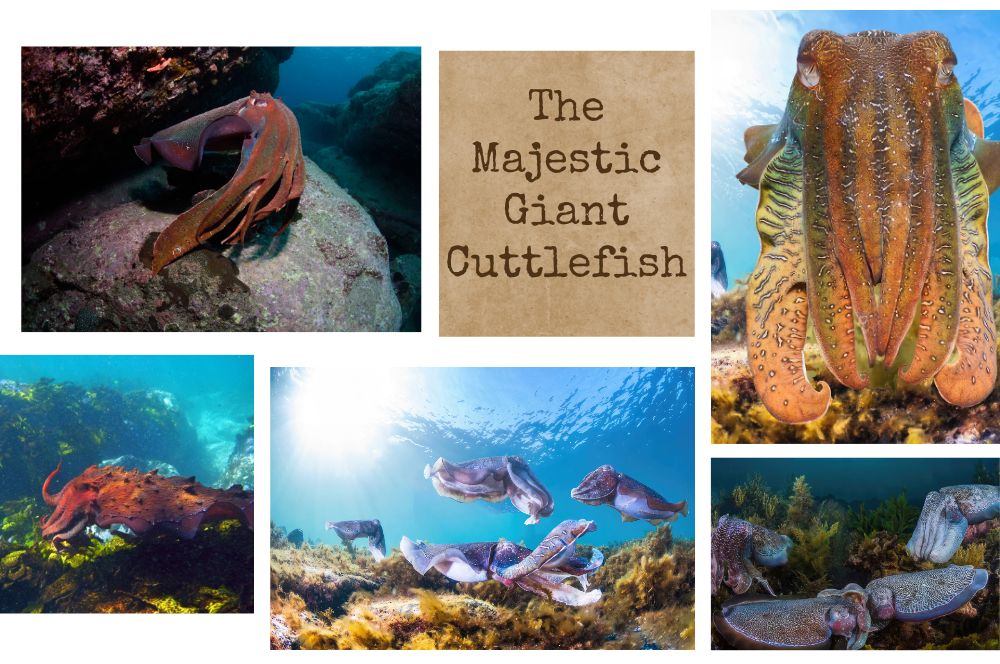
Diving with the Majestic Giant Cuttlefish: South Australia and Beyond
Imagine yourself immersed in the mesmerizing underwater world, surrounded by spectacular creatures that can change colour and texture right before your eyes. Welcome to the magical realm of diving with the majestic cuttlefish giant in South Australia and beyond! The enormous Cuttlefish is native to the southern shores of Australia and can be spotted as far up as Moreton Bay (QLD) on the eastern coast, while on the western coast, it reaches up to Ningaloo Reef (WA).
This unique experience offers divers and snorkelers the opportunity to swim alongside these fascinating beings and witness one of nature's most extraordinary spectacles up close. Ready to embark on an unforgettable adventure? Read on to discover the allure of the Giant Australian Cuttlefish, their annual breeding congregation in Spencer Gulf, and how to best prepare for this awe-inspiring encounter with the cuttlefish giant. So gear up and dive into the world of these incredible cephalopods!
Short Summary
-
Experience the captivating wonder of Giant Australian Cuttlefish up close with snorkelling, diving and glass bottom boat tours!
-
Witness the amazing spectacle of thousands congregating in Spencer Gulf for their annual breeding season - an awe-inspiring event not to be missed!
-
Explore other locations around the world to dive with giant cuttlefish for an unforgettable adventure!
The Allure of the Giant Australian Cuttlefish
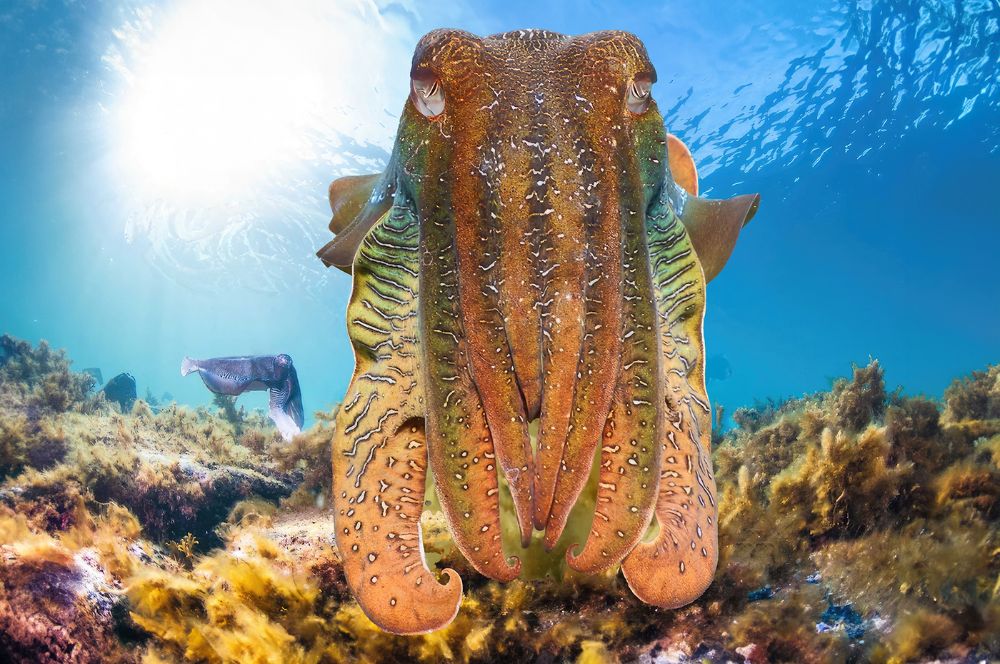
The Giant Australian Cuttlefish, scientifically known as Sepia apama, is the largest of all cuttlefish and is endemic to the southern coastal waters of Australia. Their annual migration to breed in the Upper Spencer Gulf is a spectacular natural phenomenon that attracts divers from around the world. These magnificent creatures captivate divers with their extraordinary abilities, such as changing color and texture to blend in or communicate, and their unique breeding grounds in Spencer Gulf.
Not only are they the largest cuttlefish species, but they also possess incredible features like large eyes, eight arms, and two tentacles with a unique internal shell. Their pulsating colors and dramatic displays make them a fascinating subject for underwater observation and photography, offering a one-of-a-kind experience for divers and snorkelers alike.
Appearance and Abilities
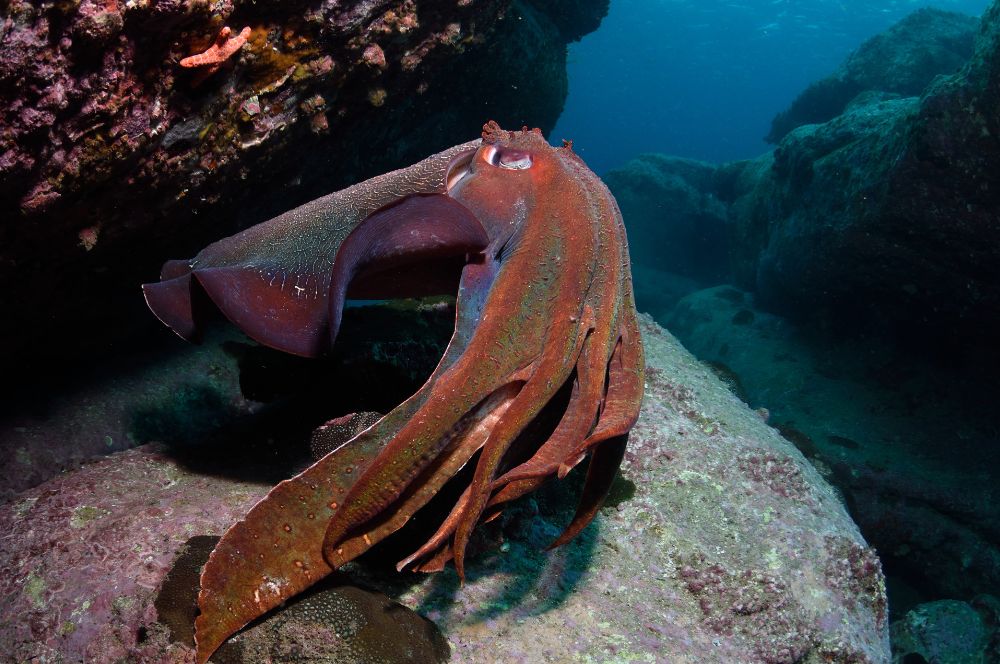
Giant Australian Cuttlefish are true masters of disguise, with the astounding ability to change colour and texture in an instant. This remarkable talent allows them to blend seamlessly with their surroundings, mimicking the appearance of sand, seaweed, or other marine life to elude predators or prey. Their large eyes, eight arms, and two tentacles create an impressive and alien-like appearance that is both captivating and otherworldly.
Beyond their striking looks, cuttlefish also possess a complex communication system that relies on their colour-changing abilities. These fascinating creatures utilize pulsating colours and patterns to express emotions, intentions, and even hypnotize their prey. Their vibrant displays serve a variety of purposes, from camouflage to mating rituals, making them one of the most intriguing marine species to observe up close.
Communication and Behavior
The Giant Australian Cuttlefish communicates through body language, using their colour-changing abilities to express emotions and intentions. This remarkable form of communication is especially important during mating season when males compete for the attention of females. Smaller male cuttlefish are known to mimic the coloration and behavior of females in order to sneak close to them and mate without the awareness of larger, more aggressive males.
During the mating season, females are focused on finding suitable locations to lay their eggs. They deposit their eggs on the underside of rocks or in rock crevices, laying between 5 and 39 eggs per day. This diligent search for suitable egg-laying sites showcases the fascinating reproductive behavior of these captivating cephalopods, making it an ideal time for divers to witness their extraordinary communication and courtship rituals.
The Allure of Giant Cuttlefish to Divers
The beauty and behavior of the Giant Australian Cuttlefish make them an irresistible attraction for divers from all around the world. Their striking appearance, hypnotic colour displays, and complex communication techniques offer a unique and unforgettable underwater experience. In fact, many divers report that the cuttlefish are friendly and curious, often following divers around for up to 15 minutes.
The annual breeding congregation in South Australia provides an unparalleled opportunity to witness the giant cuttlefish in their natural habitat. During this time, they are focused on procreation and seem oblivious to the presence of humans, allowing divers to observe their fascinating behaviours up close and personal.
The shallow waters around Point Lowly and Stony Point make it easy for even novice swimmers to experience the magic of swimming with these majestic creatures.
The Annual Cuttlefish Congregation in Spencer Gulf

Every year from May to August, thousands of giant Australian cuttlefish congregate in Spencer Gulf, South Australia, for their annual mating season. This extraordinary event is the largest known gathering of cuttlefish in the world and offers a rare opportunity for divers and snorkelers to witness the fascinating behaviours of these incredible marine animals.
The waters around Point Lowly and Stony Point in the Upper Spencer Gulf Marine Park are ideal for cuttlefish. The rocky seabeds present provide an excellent habitat for female cuttlefish to lay and attach their eggs. Conservation efforts are in place to protect this unique species and its breeding grounds, including increased protection zones and permanent protection of the breeding area.
These efforts help to ensure that future generations can continue to enjoy the awe-inspiring spectacle of the giant cuttlefish congregation in South Australia.
Timing and Location
To witness the incredible giant cuttlefish congregation, timing is crucial. The best months to visit the Upper Spencer Gulf Marine Park are May to August, with the peak of the breeding season occurring in June and July. The waters off Point Lowly and Stony Point are easily accessible, and the shallow depths of one to eight meters make it an ideal location for divers and snorkelers of all skill levels to experience the cuttlefish up close.
While the annual congregation provides an unparalleled opportunity to witness the giant cuttlefish in their natural habitat, it is essential to note that this is a sensitive time for these creatures. Divers and snorkelers must respect the cuttlefish and their breeding grounds by adhering to the guidelines set forth by conservation organizations and local authorities. By doing so, we can help ensure the survival and continued success of this remarkable species.
Conservation Efforts
Protecting the giant cuttlefish and their unique breeding grounds is of utmost importance for the survival of this incredible species. In response to the growing concern for their conservation, the South Australian government has established protection zones and implemented permanent protection measures for the breeding areas in the Upper Spencer Gulf Marine Park.
Additionally, a code of conduct has been established for divers and snorkelers visiting the breeding grounds, outlining guidelines for interacting with the cuttlefish and minimizing disturbance to their natural behaviours. These conservation efforts are crucial to maintaining the health and stability of the giant cuttlefish population, ensuring that this awe-inspiring natural phenomenon can continue to inspire and captivate generations to come.
Experiencing the Giant Cuttlefish Up Close
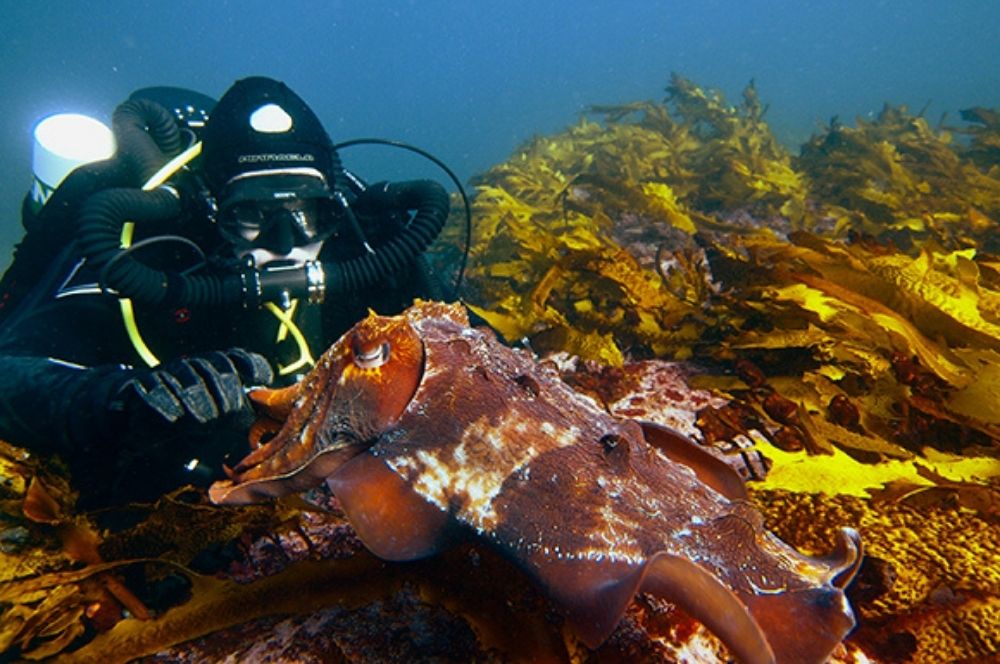
For those eager to experience the magic of the giant cuttlefish, snorkelling and diving offer the best opportunities to get up close and personal with these amazing creatures. Guided snorkelling and diving tours are available in the area, providing expert knowledge and equipment for a safe and unforgettable underwater experience. For those who prefer to stay dry, glass-bottom boat tours offer an alternative way to witness the cuttlefish and their fascinating behaviours from the comfort of a boat.
Whether you choose to dive, snorkel, or take a glass-bottom boat tour, witnessing the giant cuttlefish congregation in South Australia is a once-in-a-lifetime experience. The enchanting underwater world of these captivating creatures awaits you, promising a unique adventure that will leave you in awe of nature's wonders.
Snorkelling and Diving Adventures
Snorkelling and diving adventures in the waters off Point Lowly and Stony Point provide an unparalleled opportunity to witness the giant cuttlefish up close. The shallow waters make it accessible for swimmers of all abilities, with visibility best in the mornings. For those who prefer a guided experience, several tour operators offer snorkelling or scuba packages, ensuring a safe and unforgettable encounter with the cuttlefish.
When planning your adventure, consider the cold-water temperatures and dress appropriately with a full-length 5mm/7mm wetsuit, gloves, boots, and hood. Also, don't forget to bring a waterproof camera or GoPro to capture the incredible moments and memories of swimming alongside these mesmerizing creatures.
Glass Bottom Boat Tours
For those who prefer to witness the giant cuttlefish without getting wet, glass-bottom boat tours offer a fantastic alternative. For example, Cutty's Glass Bottom Boat Tours provides an exciting opportunity to observe the cuttlefish from the comfort of a boat as their expert guides share fascinating insights and information about these captivating creatures.
This unique experience allows visitors to appreciate the beauty and wonder of the giant cuttlefish without diving into the icy waters, making it an ideal option for families, non-swimmers, or those simply looking for a different perspective on this extraordinary natural phenomenon.
Preparing for Your Cuttlefish Encounter
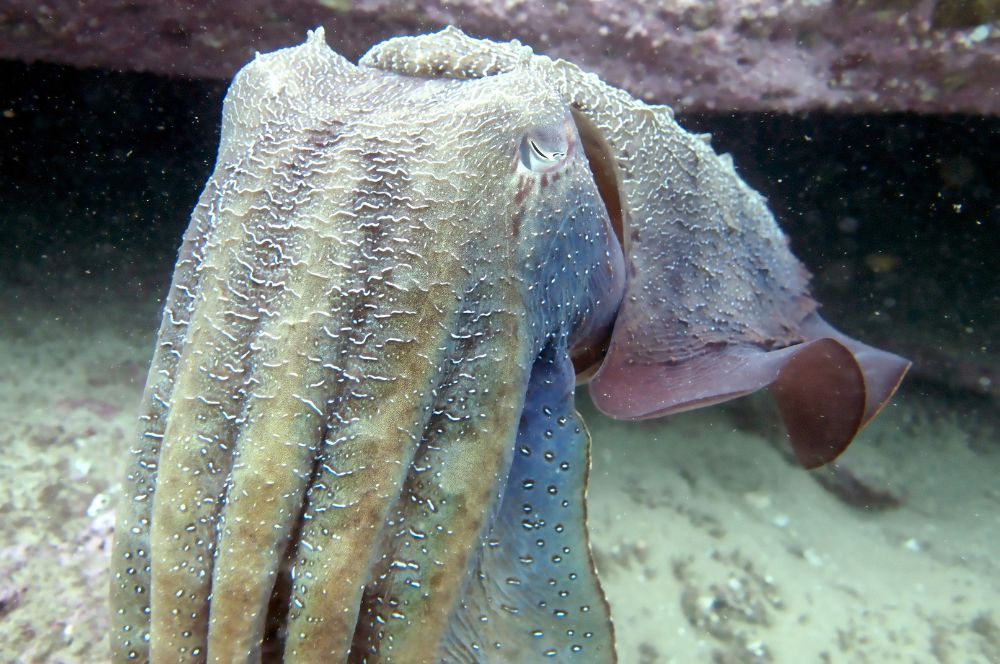
To fully enjoy your cuttlefish encounter, it is essential to be well prepared. Proper attire, including a full-length 5mm/7mm wetsuit, gloves, boots, and hood, is crucial in protecting you from the cold water temperatures. Additionally, bringing essential gear such as a mask, snorkel, fins, and a waterproof camera or GoPro will ensure you are ready to make the most of your time with the cuttlefish.
When planning your adventure, remember that cuttlefish are wild animals, and respecting their space and natural behaviours is important. Keep a safe distance, avoid touching them, and follow any guidelines provided by local authorities and tour operators to ensure a positive experience for both you and the cuttlefish.
Proper Attire
As mentioned earlier, a full-length 5mm/7mm wetsuit with hood, gloves, and boots is highly recommended for diving with giant cuttlefish due to the cold-water temperatures. A well-fitting mask with a high-quality silicone skirt is also important for a comfortable and durable seal.
The colour of the mask is a personal preference, but black masks can reduce glare and distractions. Ensuring you have the proper attire will not only enhance your comfort during the encounter but also allow you to immerse yourself in the experience without distractions fully.
Essential Gear
In addition to proper attire, several essential gear items will help ensure a successful cuttlefish encounter. A mask, snorkel, and fins are crucial for comfortable swimming and maneuvering in the water. Additionally, a waterproof camera or GoPro is a must-have item to capture the amazing moments and memories of your time with these mesmerizing creatures.
If you need to hire any equipment, such as wetsuits, masks, or snorkels, Whyalla Diving Services offers rentals for your convenience.
Other Locations Around the World to Dive with Giant Cuttlefish
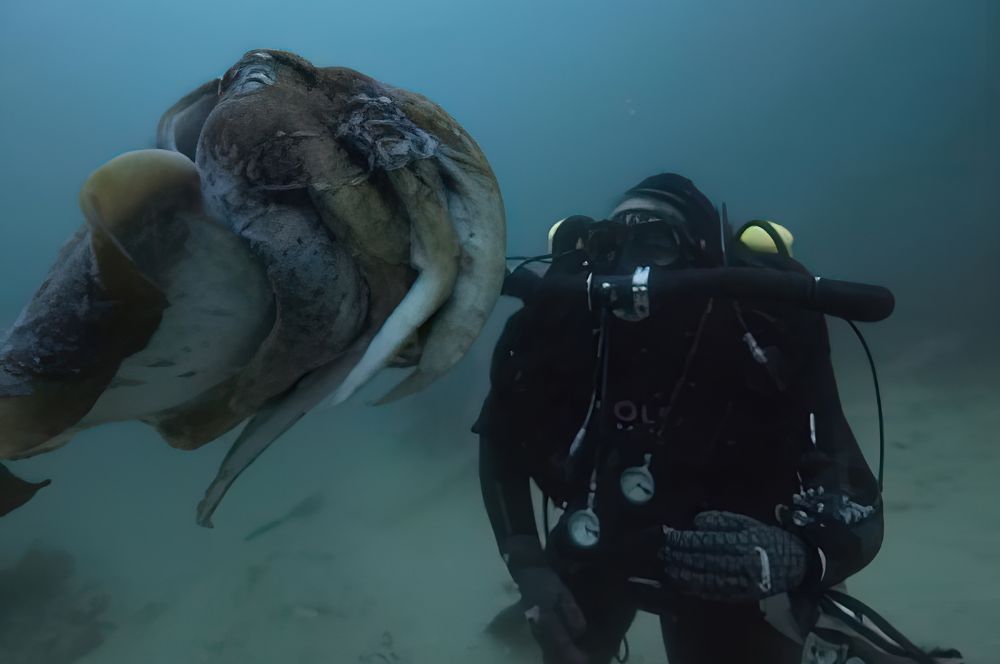
While South Australia's Spencer Gulf offers the largest and most renowned giant cuttlefish congregation, other locations around the world also provide opportunities to dive with these fascinating creatures.
In this section, we will explore some alternative destinations where you can experience the magic of swimming with giant cuttlefish, adding even more excitement and adventure to your underwater bucket list.
Sydney
Giant Cuttlefish in Sydney are most commonly seen by divers during the cooler months, from late autumn to early spring, generally around May to September. This is when the cuttlefish tend to breed and are, therefore, more abundant. Sydney offers yet another opportunity for divers to witness these incredible cephalopods' captivating beauty and behaviour in their natural habitat.
With a variety of dive sites available, Sydney provides a unique setting for those seeking to experience the wonder of swimming with giant cuttlefish.
Tasmania
For those venturing further south, Tasmania is another destination where giant cuttlefish can be found. Giant Cuttlefish can be spotted in Tasmania throughout the year, but the peak times for diving and observing these creatures tend to be during the cooler months, similar to Sydney. Hence, autumn through early spring (roughly from April to September) could be considered the best times to dive with Giant Cuttlefish in Tasmania. The increased sightings during these months are likely due to their breeding season. For those venturing further south, Tasmania is another destination where giant cuttlefish can be found.
With its stunning natural landscapes and a variety of dive sites, Tasmania offers a unique and unforgettable experience for divers seeking to swim with these fascinating creatures.
Indonesia – Bali and Raja Ampat
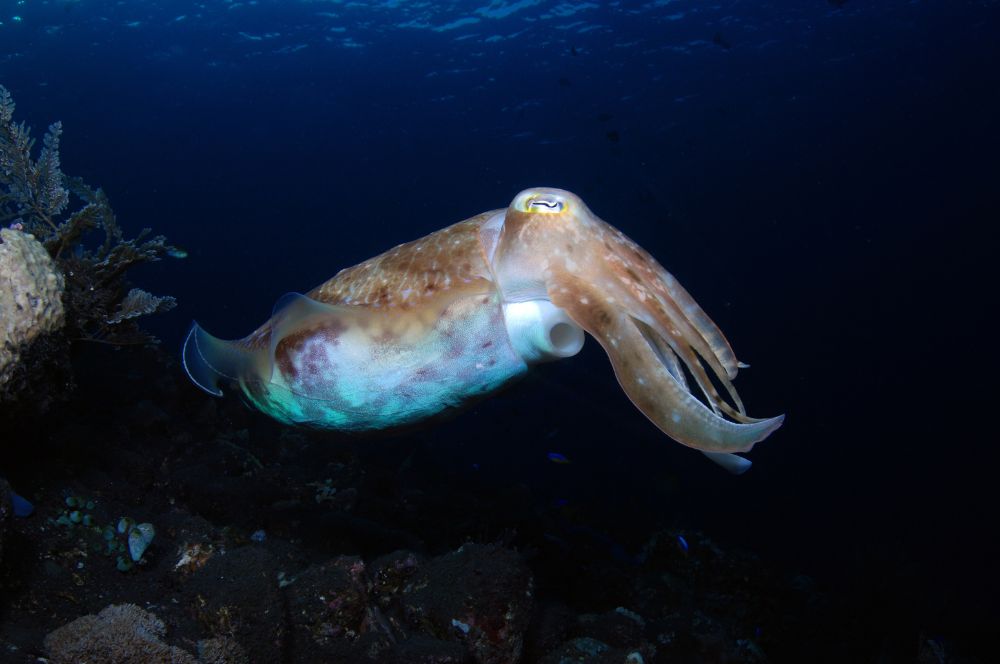
Finally, the popular diving destinations of Bali and Raja Ampat in Indonesia are also home to giant cuttlefish. These incredible locations offer a rich and diverse underwater landscape, allowing divers to swim with various marine species, including the mesmerizing giant cuttlefish.
The giant cuttlefish in Bali and Raja Ampat are not the same species as the giant cuttlefish in Southern Australia. The giant cuttlefish in Bali and Raja Ampat are known as the Broadclub Cuttlefish (Sepia latimanus), while the giant cuttlefish in Southern Australia is known as the Australian Giant Cuttlefish (Sepiida apama).
| Feature | Australian Giant Cuttlefish (Sepia apama) | Broadclub Cuttlefish (Sepia latimanus) |
|---|---|---|
| Size | Over 1 meter in length, up to 23 kg | Up to 50 cm in length, several kg |
| Habitat | Southern coast of Australia | Indo-Pacific region |
| Behavior | Known for large breeding aggregations | Changes color and pattern rapidly |
| Lifespan | 1-2 years | 1-2 years |
| Conservation | Subject to protection efforts due to past decline | Faces threats from pollution, habitat loss, and potentially overfishing |
The best time to dive with giant cuttlefish in Bali and Raja Ampat is during the dry season, which runs from April to October. The water is clear and calm during this time, making it ideal for diving. Giant cuttlefish are most active during the day, so it is best to go diving in the morning or afternoon. They can be found in a variety of habitats, including coral reefs, mangroves, and seagrass beds
Summary
In conclusion, diving with the majestic Giant Cuttlefish in Southern Australia is an awe-inspiring experience that should be on every diver's bucket list. From their captivating appearance and abilities to their unique breeding congregation in Spencer Gulf, these incredible creatures offer a once-in-a-lifetime adventure that will leave you with unforgettable memories. By being well-prepared with proper attire and essential gear and by respecting their natural habitat and behaviours, you can fully immerse yourself in the magical underwater world of the giant cuttlefish. So gear up, dive in, and get ready to be enthralled by the beauty and wonder of these extraordinary marine animals.
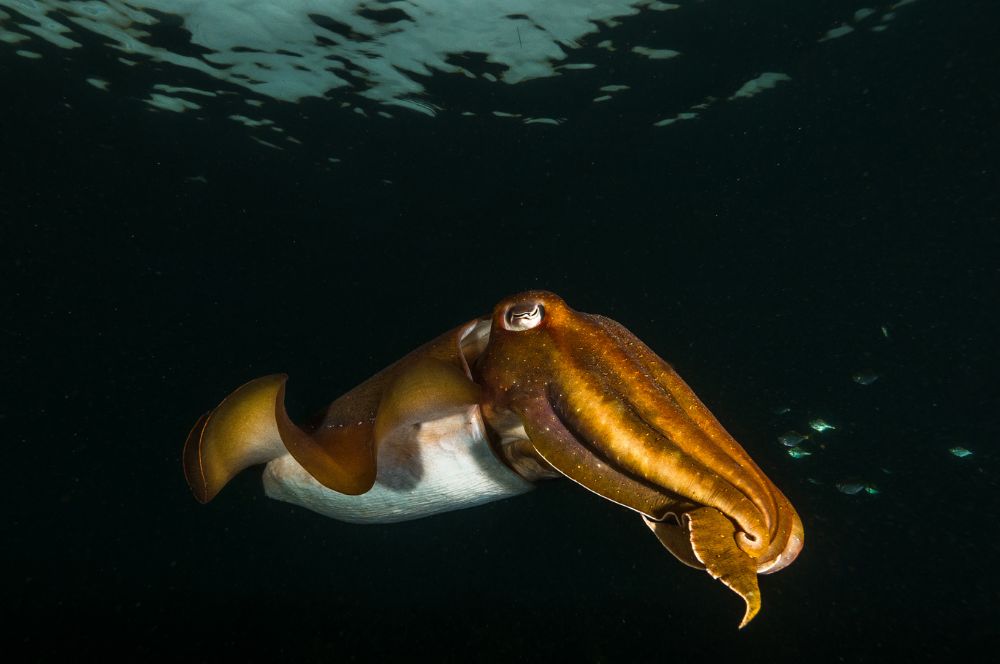
Frequently Asked Questions
Where are the giant cuttlefish in Australia?
You can find Australia's Giant Cuttlefish swimming in the beautiful and vibrant Southern Spencer Gulf, Moreton Bay (QLD), and Ningaloo Reef (WA) waters. Come explore the natural wonders of Australia and witness these magnificent creatures in their natural habitat.
How big is the Australian giant cuttlefish?
Wow! The Australian giant cuttlefish is an impressive species, reaching up to 1.5m in length and making it the largest of all cuttlefish species!
Amazingly, this fascinating creature can instantly change its colour to blend into its environment.
Is the giant cuttlefish edible?
Yes, the giant cuttlefish is indeed edible! Its unique taste and texture make it a great addition to any seafood dish, from stews and soups to grilled and fried preparations.
It can be cooked in a variety of ways, from steaming and boiling to baking and roasting. It is also a great source of information.
What is the biggest Australian cuttlefish?
Wow! Sepia apama is the biggest Australian cuttlefish! Growing up to half a meter in length and weighing up to 11kg, this giant of the sea can be identified by two rows of three skin flap-like papillae over each eye.
Truly an amazing species, these creatures live around the coastline of the southern half of Australia, from Central Queensland on the east coast.
RELATED POSTS
-
The Best Places to See Marine Life…
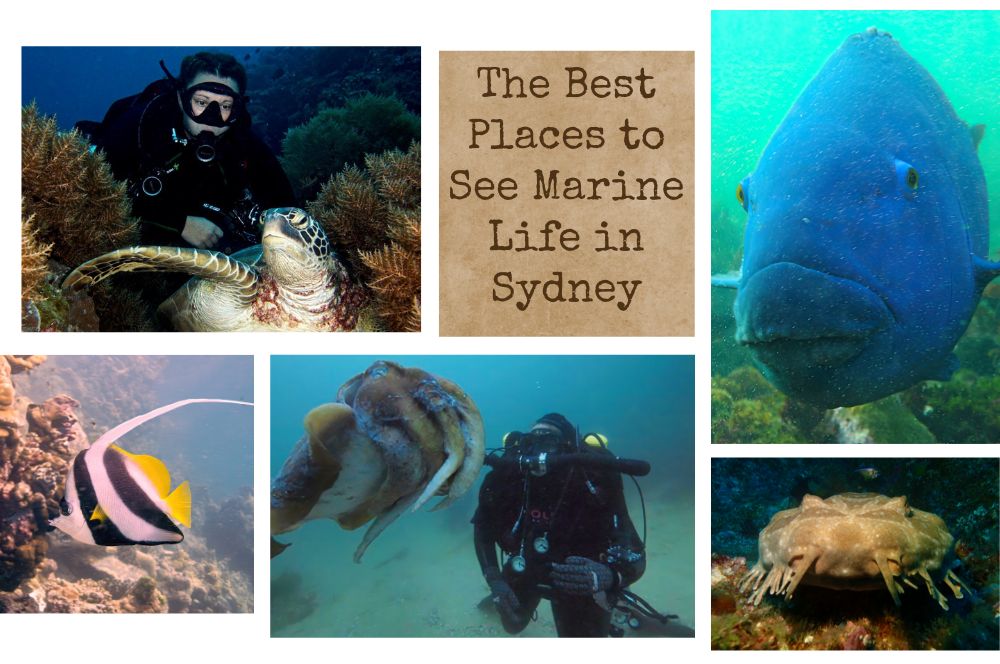
The Best Places to…
The Best Places to See Marine Life in Sydney Welcome to the underwater world of Sydney, where vibrant marine […] -
Sea Dragon Mysteries Unveiled: Ultimate…
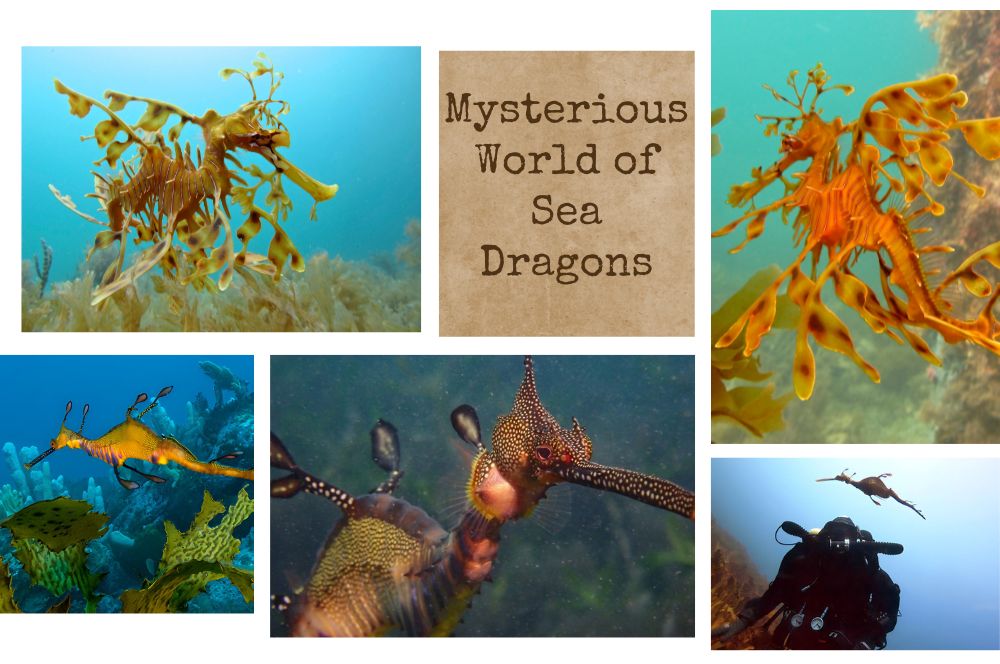
Sea Dragon Mysteries…
Uncovering the Mysterious World of Sea Dragons: A Guide for Scuba Divers Have you ever wondered about the […] -
Dive with Seals in NSW: Explore Montague…
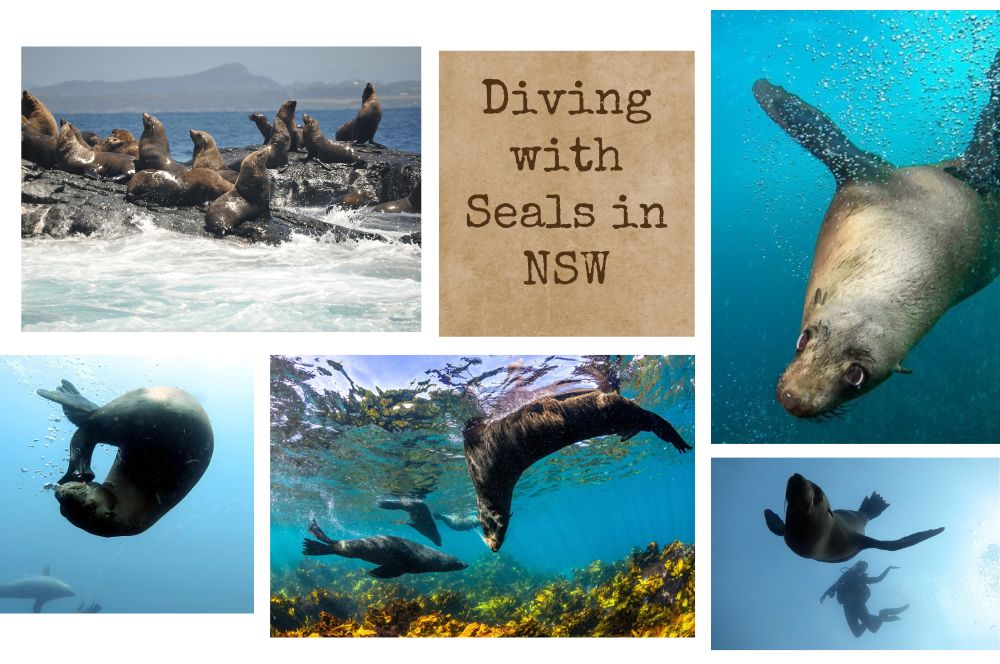
Dive with Seals in…
Diving with Seals: Discover the Top 3 Locations in New South Wales You can go diving with seals and have […] -
Sydney Diving: Uncover Mermaid's Purses…
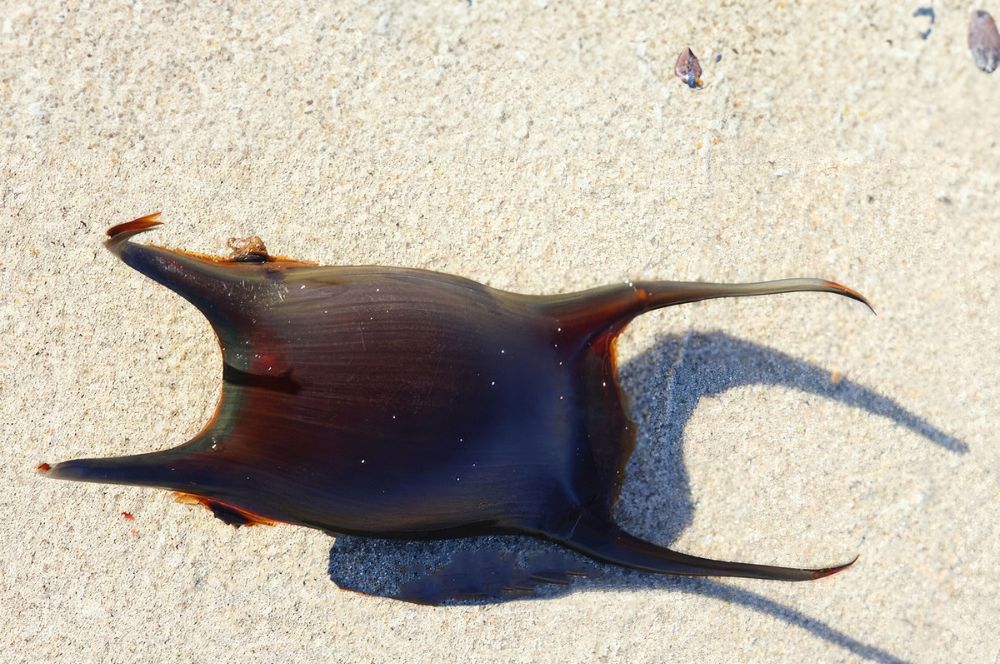
Sydney Diving: Uncover…
Diving into Mermaid's Purses: Discovering Underwater Secrets with Our Sydney Sharks Have you ever encountered […]
Recent Posts
